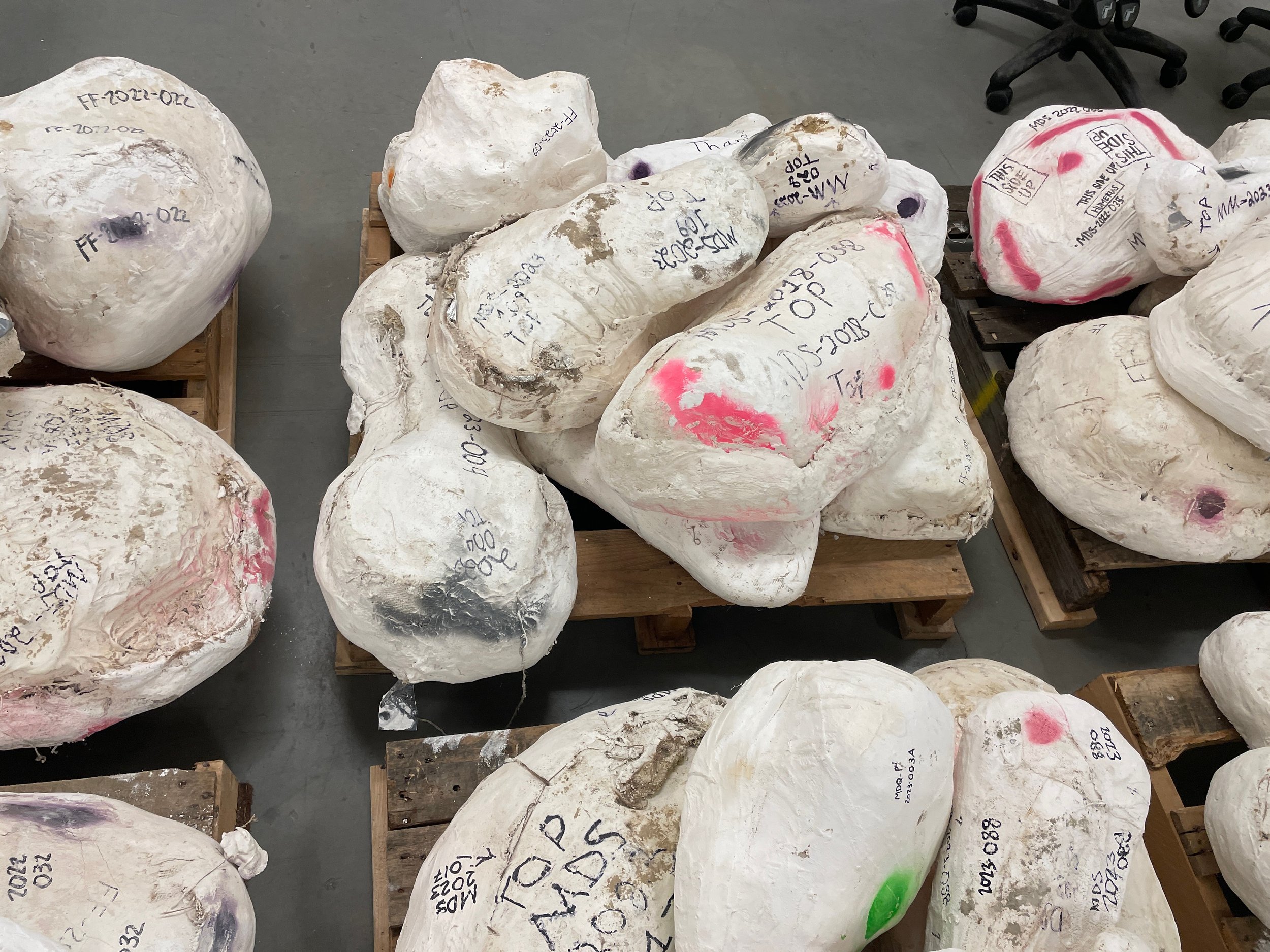Partnership expands museum fossil collection and gives guests a front row seat
By Cody Hefner
Vice President, Marketing & Communications
Cincinnati Museum Center, Cincinnati, OH
CINCINNATI - Cincinnati Museum Center (CMC) announced a new partnership with Elevation Science Institute that will expand the museum’s vertebrate paleontology collections and continue ongoing field work. The partnership was recently celebrated with the delivery of 200 burlap- and plaster-wrapped fossils to CMC’s Geier Research and Collections Center.
Elevation Science has been leading public paleontology expeditions in Montana since 2017, including – coincidentally – at many of the same field sites previously worked by teams led by CMC paleontologists from 2000 to 2012. CMC teams working on these sites previously excavated a Diplodocus bonebed and an incredible array of Jurassic-age dinosaur fossils, including the 50-foot-long Galeamopus greeting guests at the entrance to its Dinosaur Hall in the Museum of Natural History & Science. These fossil sites are all located on public lands administered by the Bureau of Land Management.
“As we are the repository for these fossils from federal land, the partnership allows Elevation Science Institute staff to prepare them for study in our state-of-the-art paleontology lab, while also assisting in the training of museum volunteers,” said Dr. Glenn Storrs, Withrow Farny Curator of Vertebrate Paleontology at Cincinnati Museum Center. “At the same time, Elevation Science is able to fulfill their obligation to see that the fossils are properly curated at Cincinnati Museum Center. It’s a win-win for all.”
Through the partnership, CMC will continue to be a repository for fossils collected on the federally managed land. Elevation Science will lead and manage the active digs that will reveal those fossils for future research, education and exhibition. Once those fossils arrive in Cincinnati – wrapped in their toilet paper, burlap and plaster field jackets – they’re delivered to CMC’s Paleo Lab, located inside the Museum of Natural History & Science, where Katie Hunt, Elevation Science’s Paleontology Lab Manager, is working alongside CMC curators and volunteers to prepare them.
“Elevation Science invites citizen-scientists from all over the globe to join our paleontologists at our active research sites,” said Jason Schein, Founding Executive Director of Elevation Science Institute. “To date, we’ve had over 500 participants help us excavate dinosaurs at Dr. Storrs’s former field sites, so we couldn’t be happier about partnering with him and Cincinnati Museum Center to prepare and house these amazing specimens. It’s a wonderful paleontology reunion of sorts!”
In the Paleo Lab, the fossil’s field jacket is carefully cut open – like removing a cast on a broken arm – exposing the fossil within, still embedded in the rock in which it was discovered. Over days, weeks and months, the rock is meticulously chipped and chiseled away to extricate the fossil within. Museum guests get a front row seat to this paleontological process through a large viewing window where they can see the lab in action.
CMC is a destination for paleontologists and researchers who regularly visit to access the more than 30,000 fossils in its vertebrate paleontology collection, one of the largest in the country. This past October, Cincinnati hosted the international Society of Vertebrate Paleontology Annual Meeting, welcoming over 1,100 paleontologists from around the world. The first stop for many was a welcome reception hosted by CMC. It continues the region’s legacy as a leader in vertebrate paleontology. Just miles away, Big Bone Lick is the birthplace of American vertebrate paleontology, where mastodon bones were first discovered in 1739, and the site of the first American paleontological excavation led by William Clark in 1807 on the orders of President Thomas Jefferson. The existence of such large bones led to revolutionary theories on extinction, evolution and climate change.


